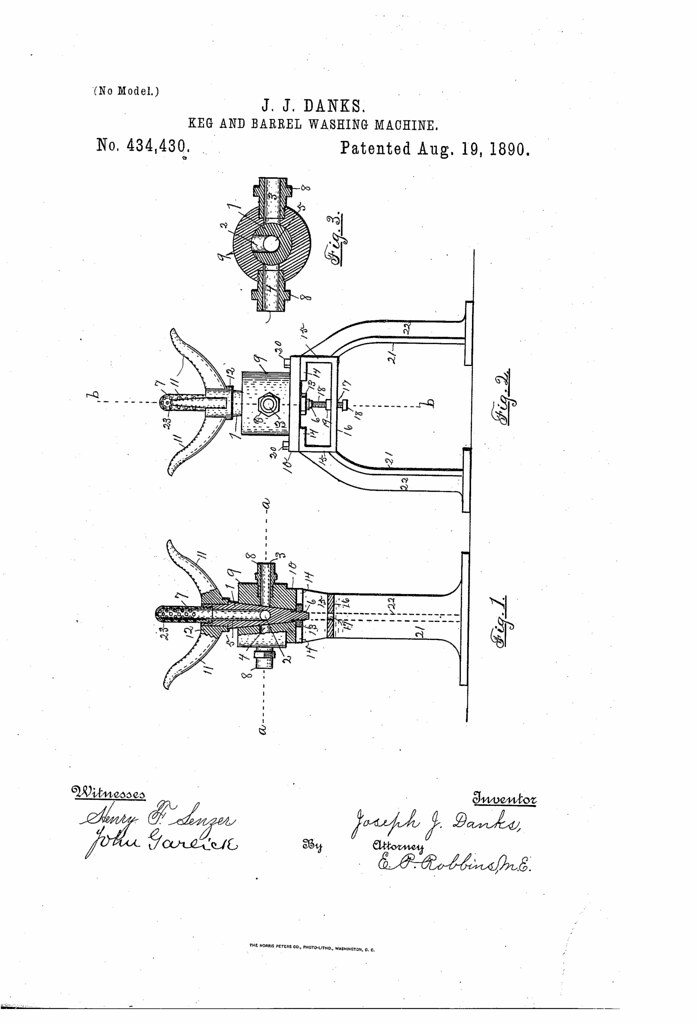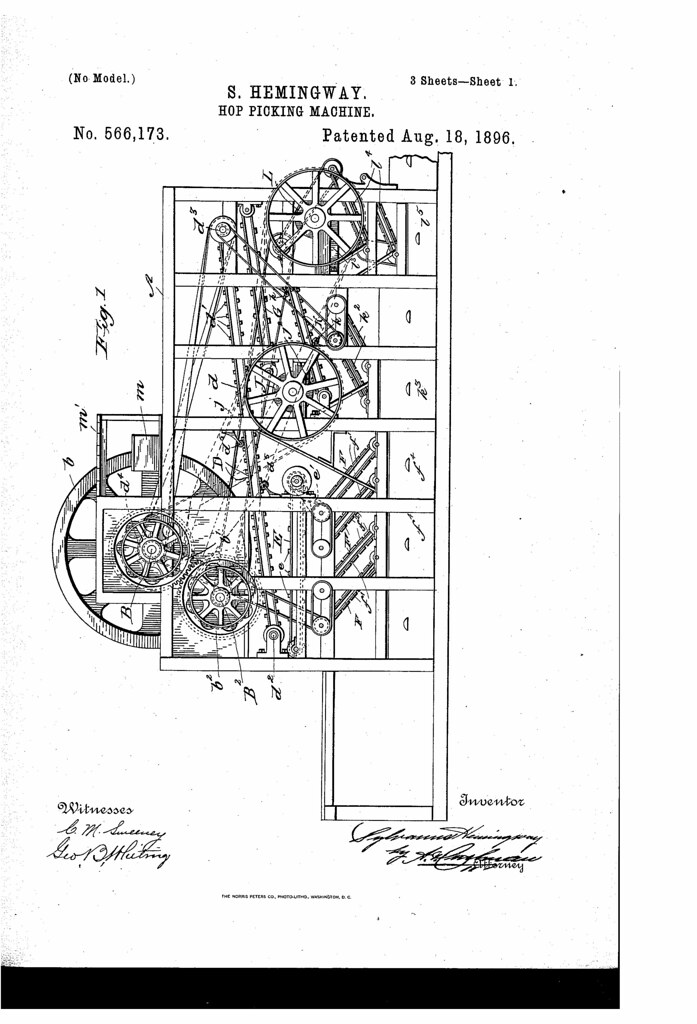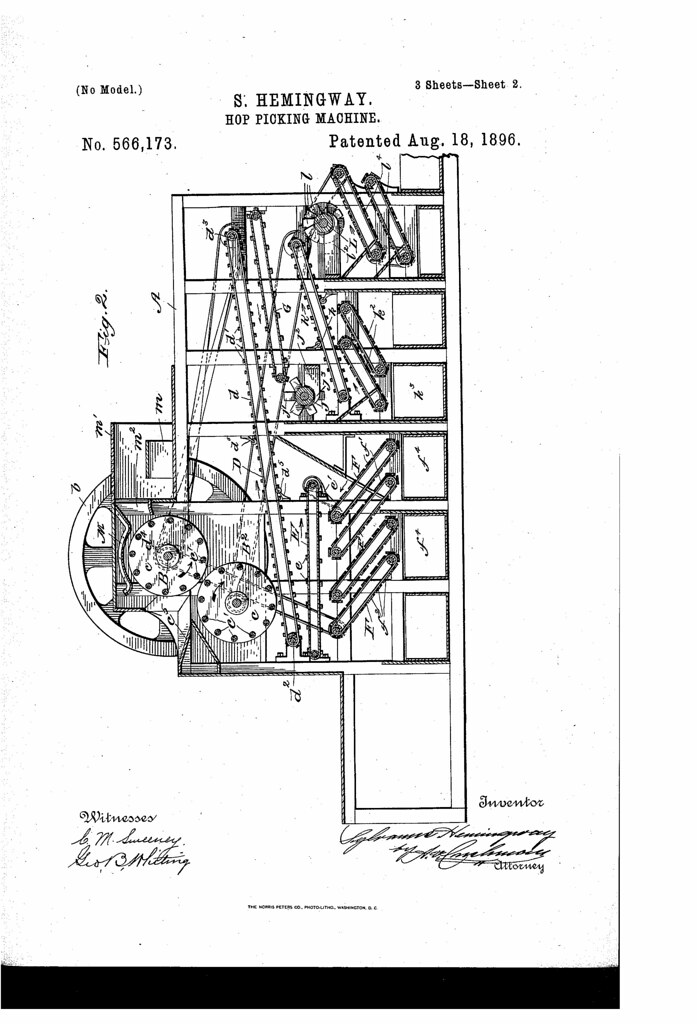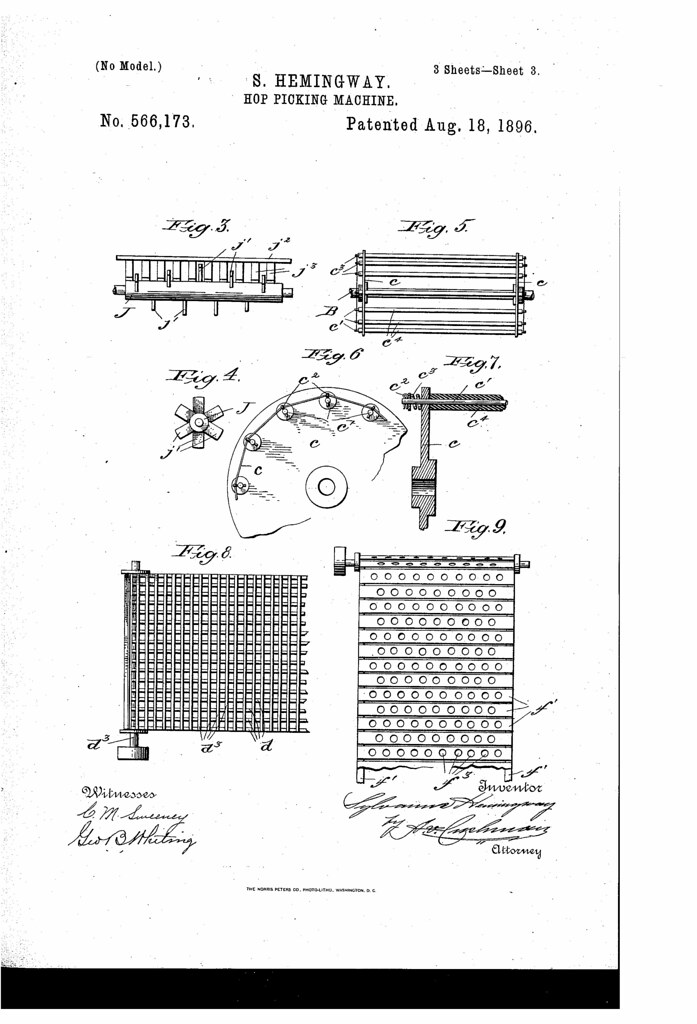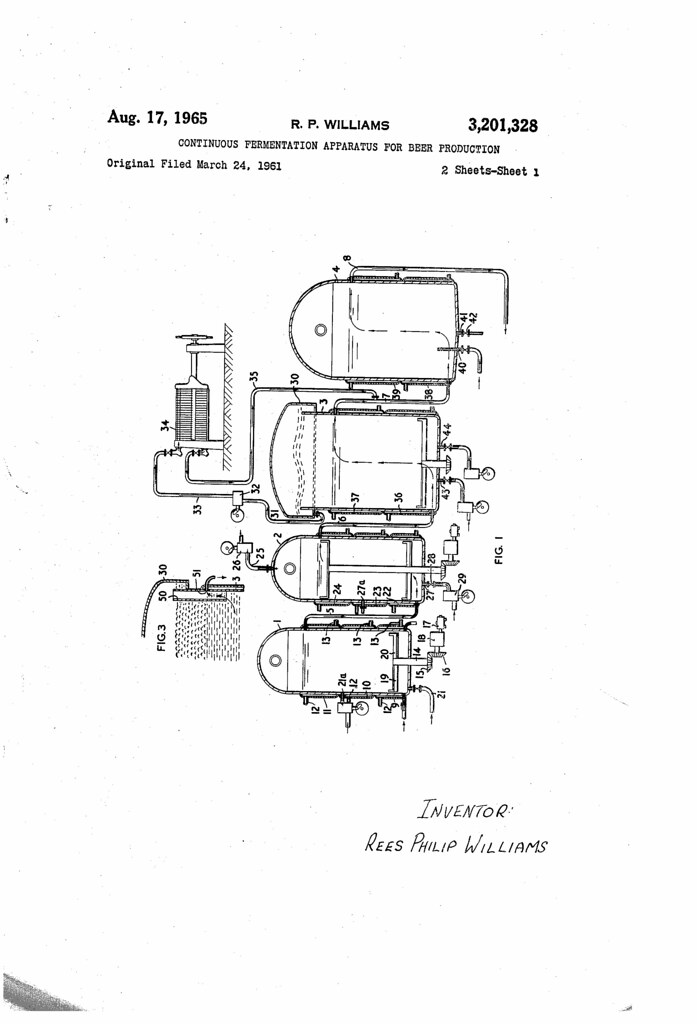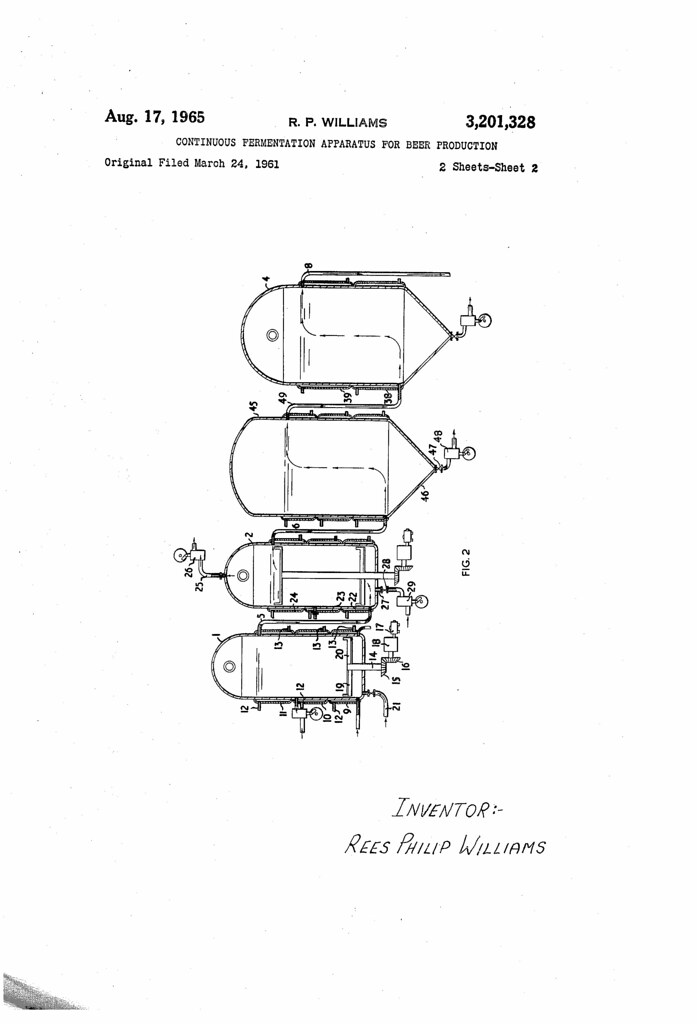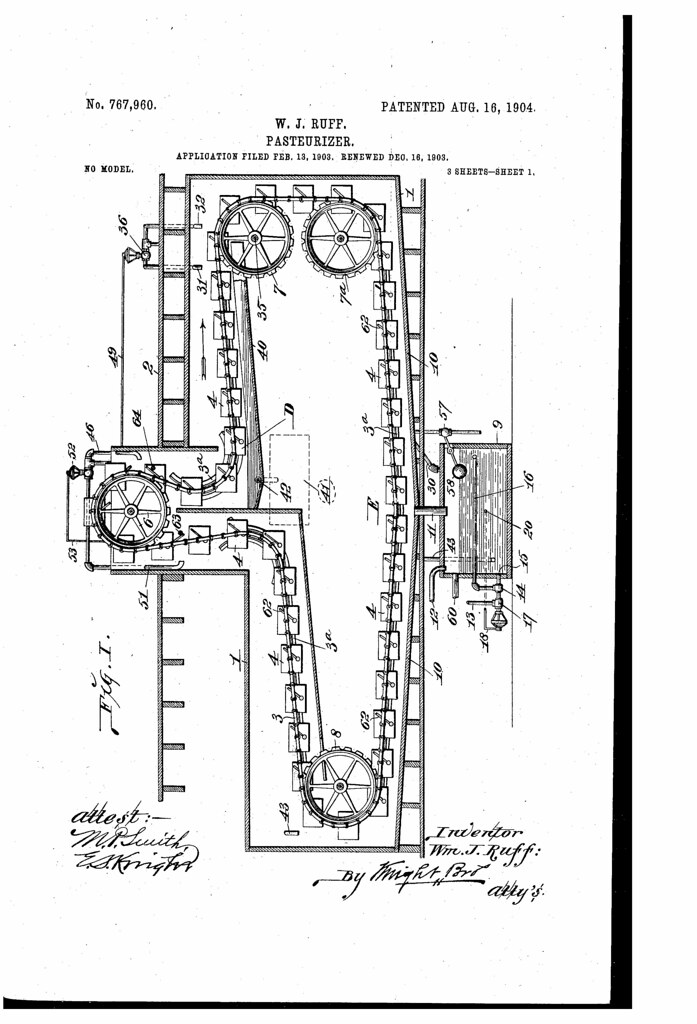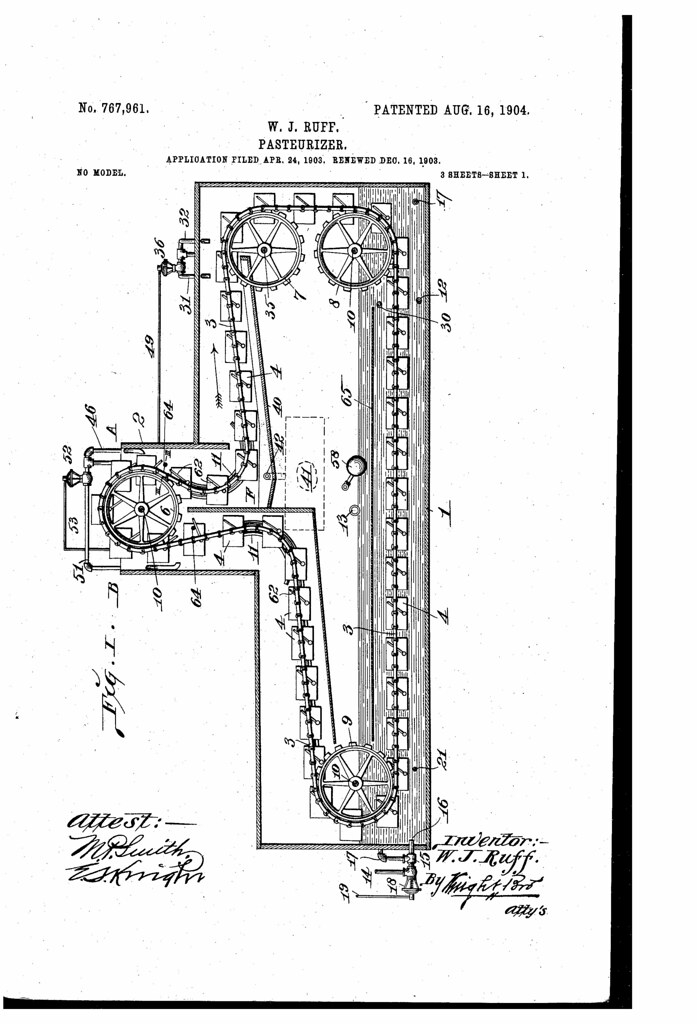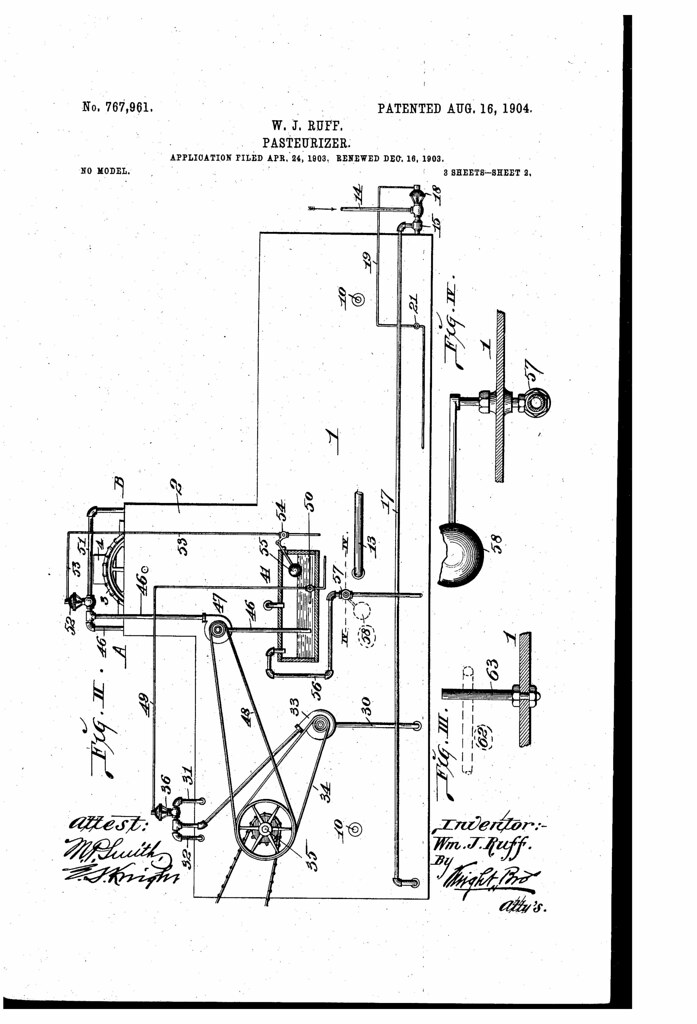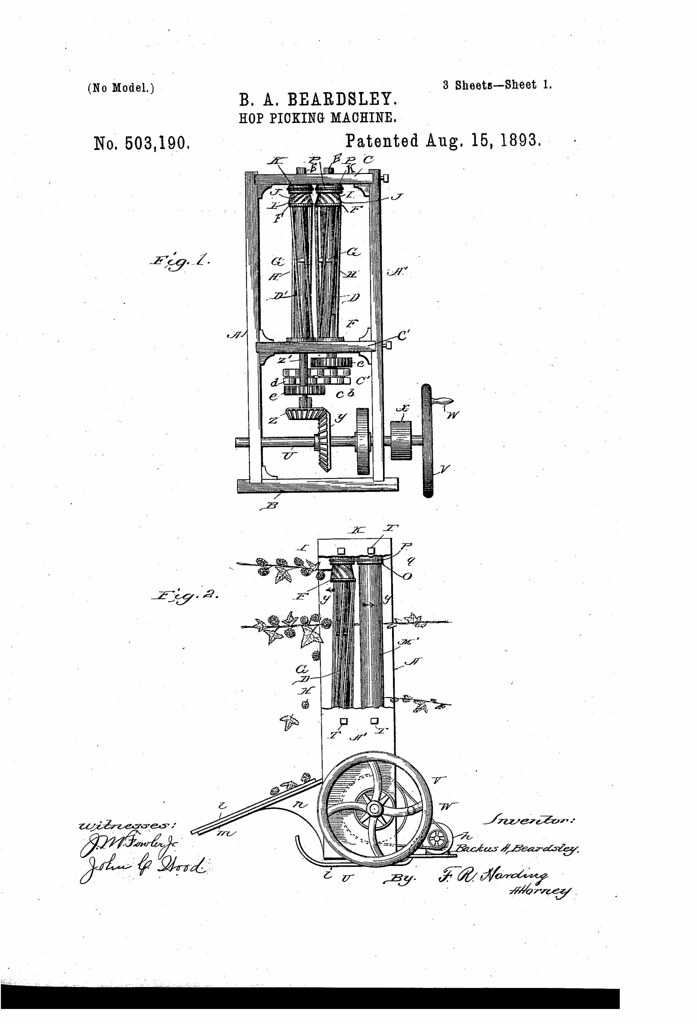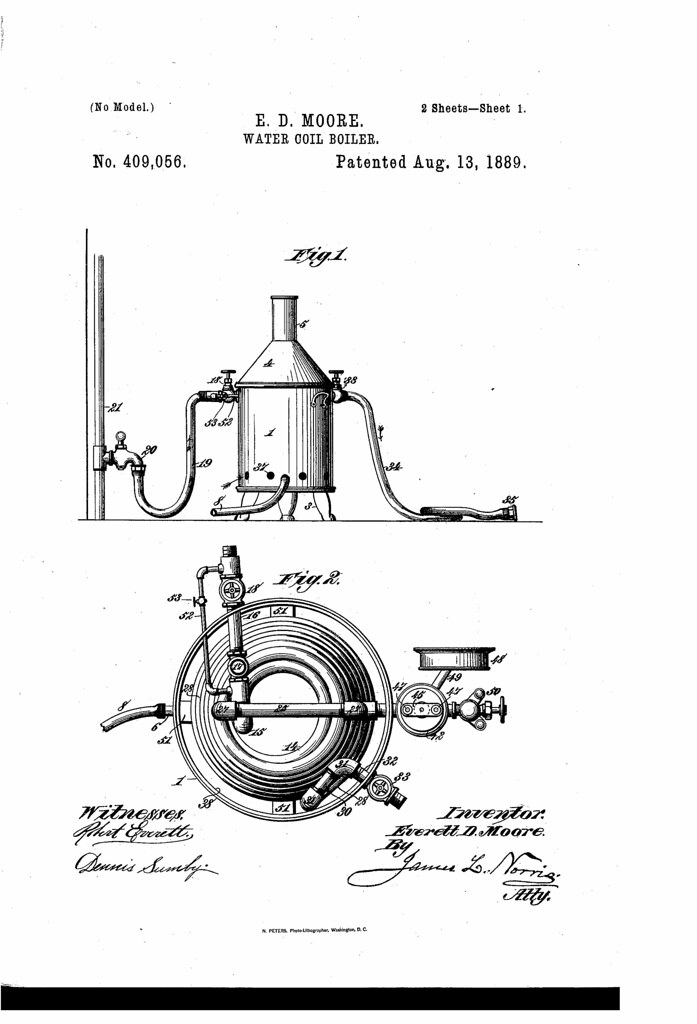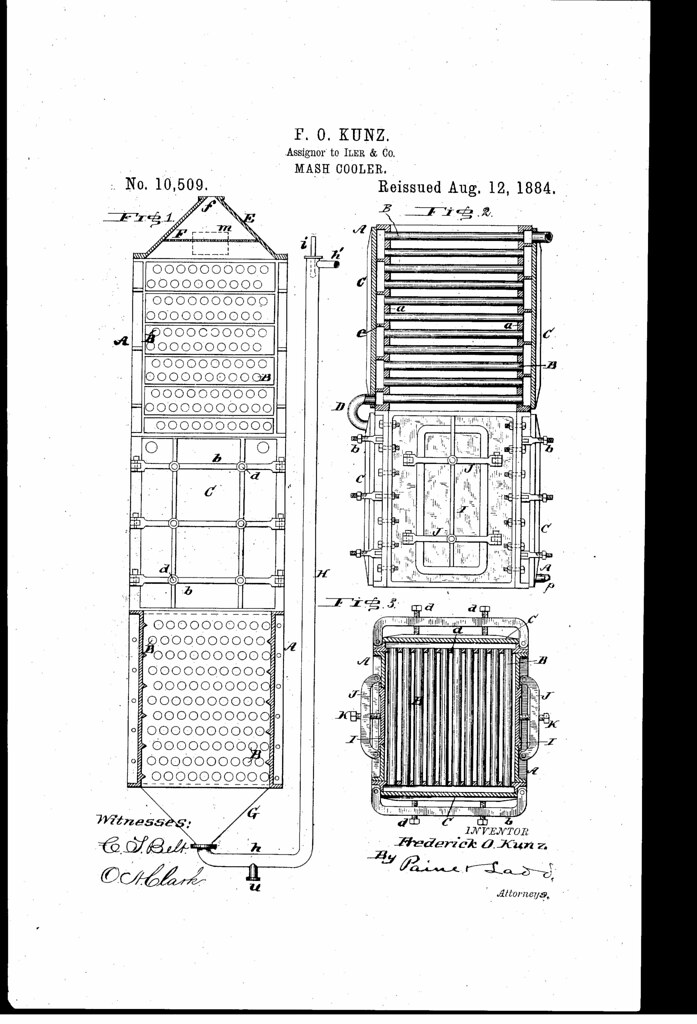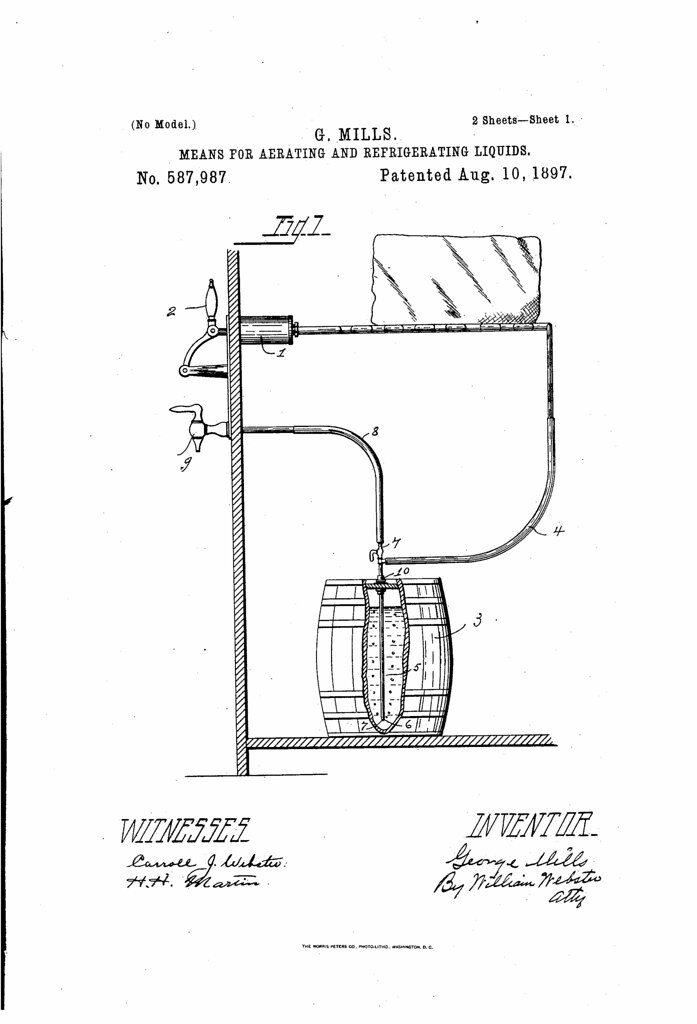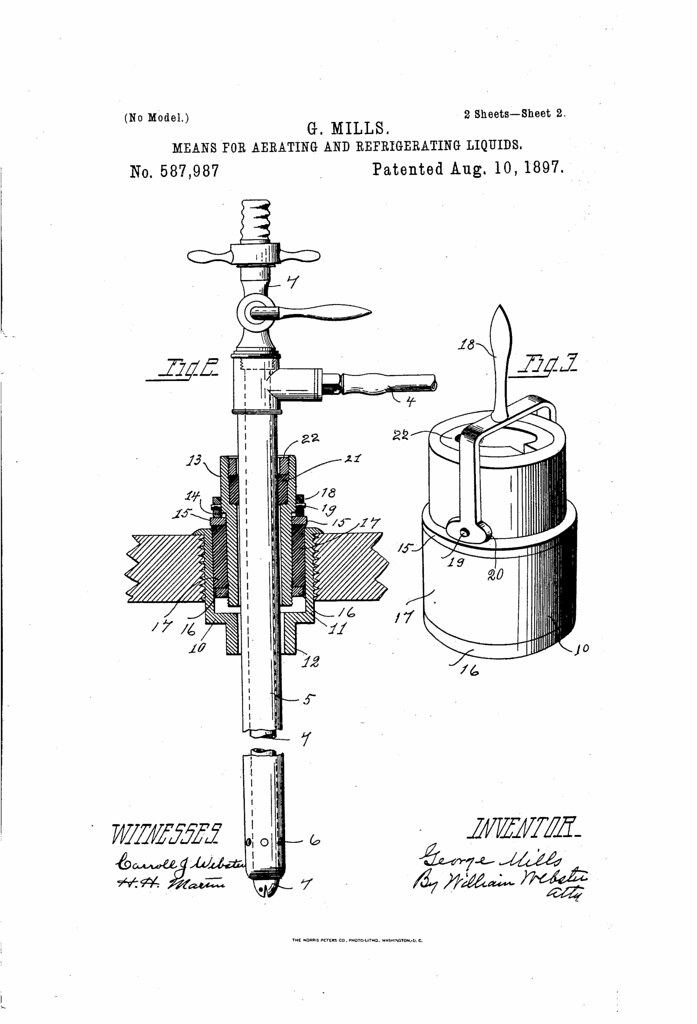
Today in 1900, US Patent 656418 A was issued, an invention of James O’Connor, for his “Device For Drawing Steam Beer, Etc.” There’s no Abstract, although in the description it includes these claims:
My invention relates to an apparatus which is designed for drawing liquids under pressure; but it is especially useful when connected with casks containing what is known as steam-beer or beer in which carbonic acid gas is contained to produce a high pressure and head within the cask.
It consists of connections between one or more casks and a distributing-chamber and connections between said chamber and a cylinder containing a piston which is reciprocable within the cylinder, so that when beer is admitted into the cylinder the piston will be moved toward the opposite end until the de sired amount of beer has been admitted, which is shown by a suitable recording device. The beer is drawn from the cylinder through a discharge-cock, and the gas in the beer is so diffused and caused to escape from the beer that little or no foam results when it is drawn from the cylinder. A second cylinder in line with the first contains a piston, the piston-rod connecting the pistons in both cylinders, so that they move in unison. A four-way cock is interposed between the cylinders, and water under pressure is brought through this cock and allowed to enter the second cylinder while the beer is entering the first and the cock is turned so as to allow the water to escape from this cylinder and to enter the first cylinder to return the piston therein to its normal position after the boot has been drawn.


